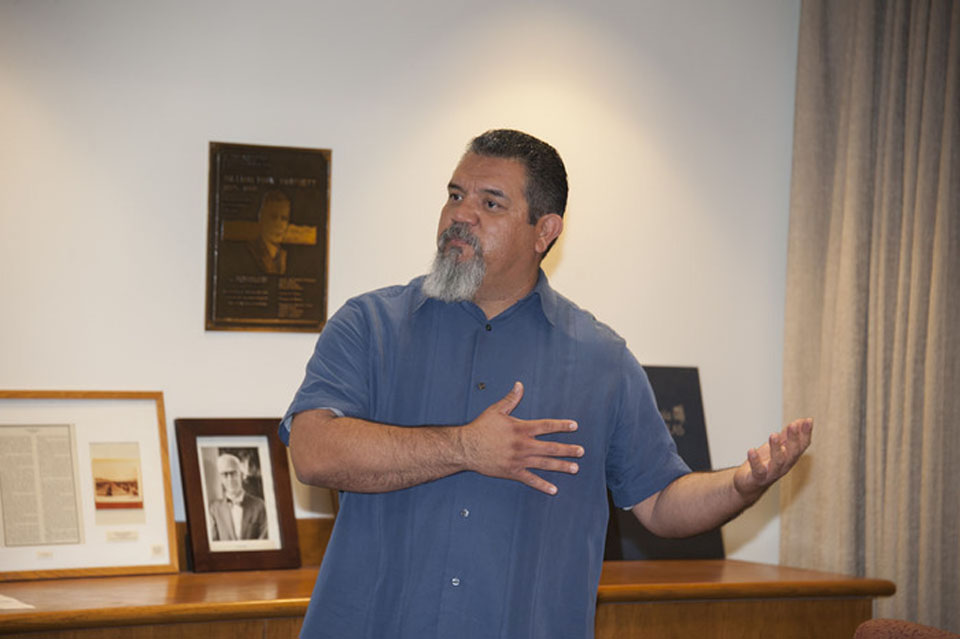CSUN Chicana/o Studies Anthology Paints New Images of Latinos/as
“Never judge a book by its cover” is a familiar phrase that can be applied when people hear the word “Latino.” Thanks to a new anthology composed by California State University, Northridge’s Department of Chicana/o Studies, the perception of what “Latino” means may forever be changed.
Chicana/o studies professor Gabriel Gutiérrez and a team of 30 graduate students and six colleagues created “Latinos and Latinas At Risk” to give readers the opportunity to explore the various identities and challenges of Latino/a life in the United States through a series of essays by Gutiérrez and his students. The anthology was also a project of the Center for Study of the Peoples of the Americas.
“[The book] began with trying to conceptualize what it is to be a Latino. It’s a complex issue,” Gutiérrez explained. “In some circumstances, it becomes a unifying term with a pan-ethnic approach, with different nationalities. In other cases, the concept of Latino itself is problematic because people prefer ‘Latino’ to ‘Hispanic.’
“This is because Hispanic is more referential to the European,” he continued. “Some claim that ‘Latino’ gives more prominence to the indigenous regions. But the problem is that the very word ‘Latino’ comes from the root ‘Latin,’ which is European. …And the term Latin is then ‘Hispanicized’ with the ‘a/o’ suffix, so it’s sort of a double whammy.”
Gutiérrez explained that the anthology breaks ground by looking at new and insightful perspectives of Latino/a identity, such as the erasure of indigenous roots with some focus on the Los Angeles community.
“On the other hand, people say Latino/a is an attempted erasure of the indigenous,” he said. “One can say that national identities are attempts at erasure as well because what it does is superimpose another identity on what is indigenous.”
An example in the anthology is an essay on the Mayan youth that live in Los Angeles. Written by graduate student Flori Boj Lopez, the piece describes the search for identity by the youth in Los Angeles. While the Mayan youth may see themselves as Latinos, they also come to realize that the deeper they look into their heritage, the more complex placing their identity becomes.
“Are they American, are they Latino/a, are they Guatemalan or are they Mayan? It’s a fascinating question,” Gutiérrez said.
With more than 600 pages of text mainly written by CSUN graduate students delving into the concept of Latina/o life challenges, “Latinos and Latinas at Risk” was an opportunity for them to explore their own understanding of the issue as well, Gutiérrez said.
“Part of what we do is the learning,” he said. “It reminded me that knowledge is not finite. In fact, in some cases to claim to have knowledge is the end of knowledge, the end of wisdom and inquiry. Working with graduate students on this project was instructional. It was about putting theory into practice, about engaging students in the research process to make their work viable and tangible in terms of potential outcomes. It shows them that their work matters.”




 experience
experience